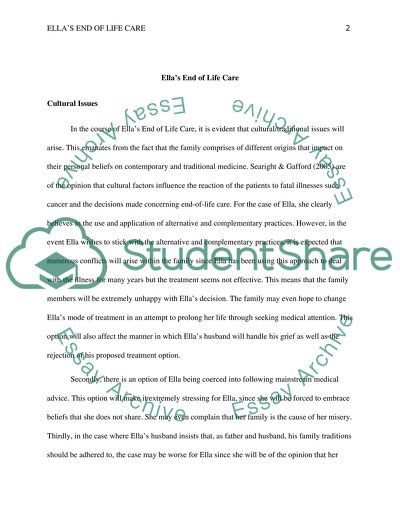Cite this document
(“Ella's End of Life Care Essay Example | Topics and Well Written Essays - 1750 words”, n.d.)
Retrieved from https://studentshare.org/sociology/1699616-ellas-end-of-life-care
Retrieved from https://studentshare.org/sociology/1699616-ellas-end-of-life-care
(Ella'S End of Life Care Essay Example | Topics and Well Written Essays - 1750 Words)
https://studentshare.org/sociology/1699616-ellas-end-of-life-care.
https://studentshare.org/sociology/1699616-ellas-end-of-life-care.
“Ella'S End of Life Care Essay Example | Topics and Well Written Essays - 1750 Words”, n.d. https://studentshare.org/sociology/1699616-ellas-end-of-life-care.


